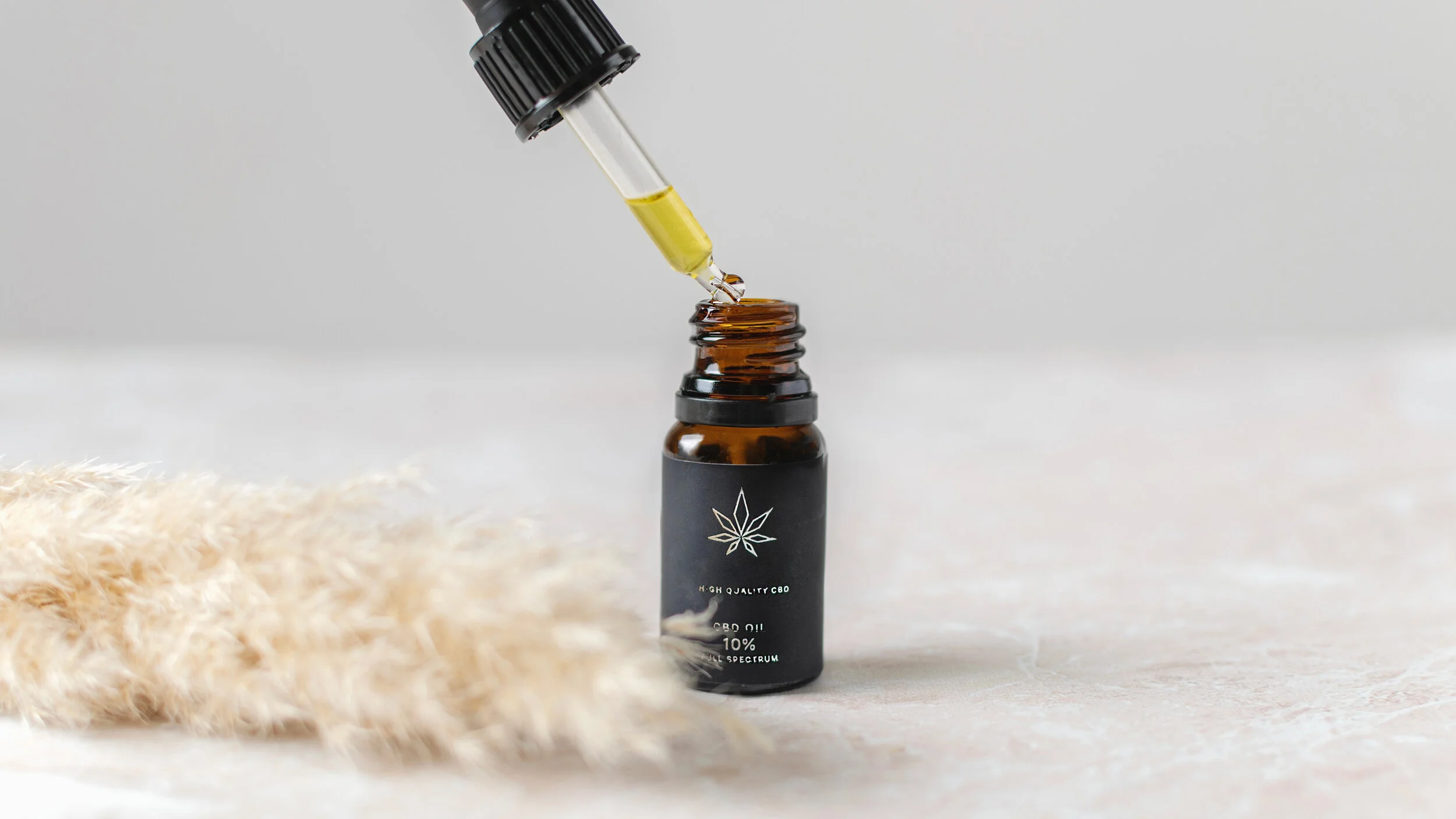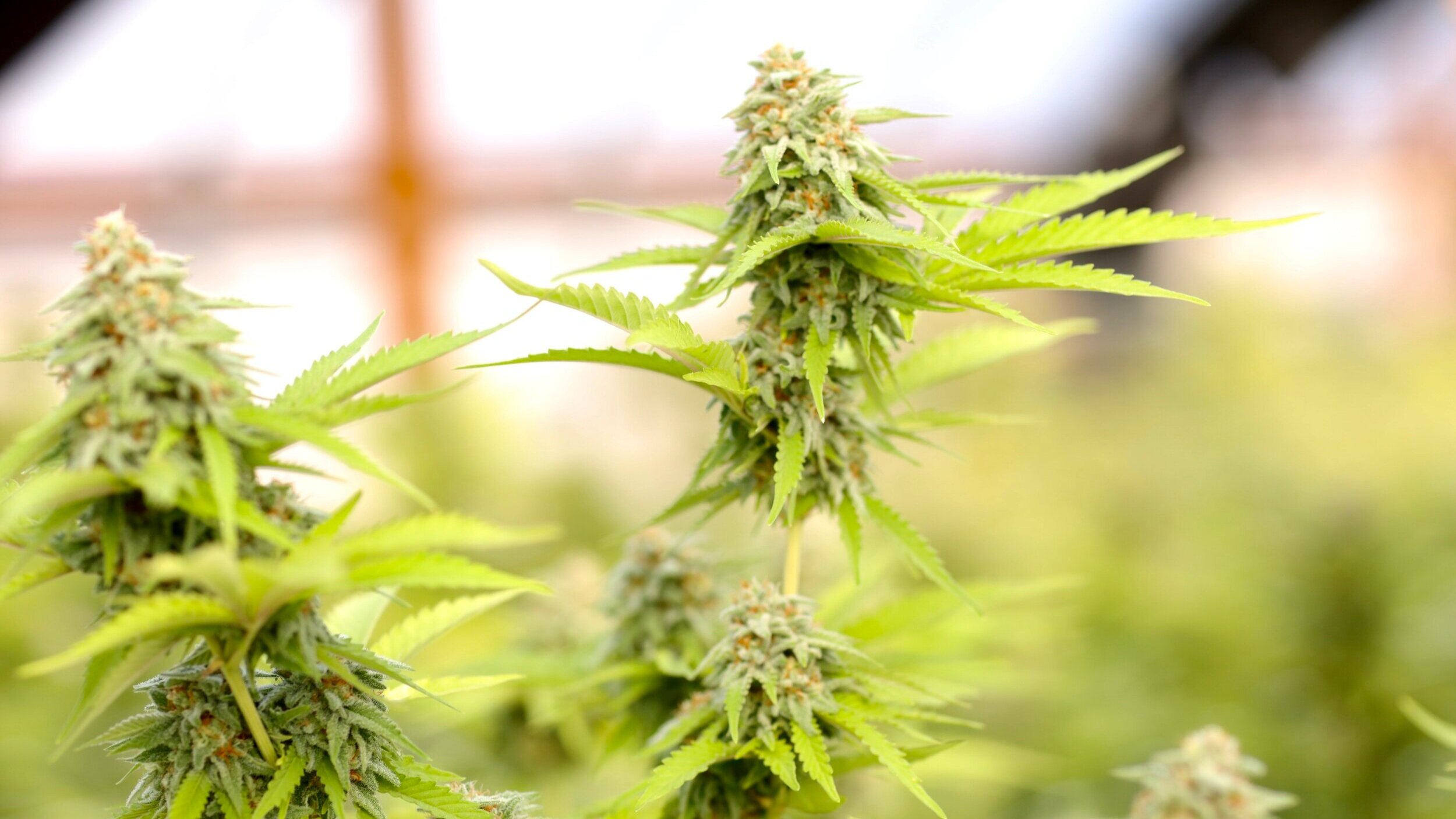The Craze Over CBD: What’s the Hype?
by Jenny Long
What do makeup, sparkling water, and pet treats have in common? Well, you can buy them infused with CBD with just a quick search on the internet. Within the past few years, it seems like CBD products have overwhelmingly made their way into a great deal of everyday personal care items and food products. Touted for its health benefits, CBD (also known as cannabidiol) is a compound that comes from the Cannabis plant. Often associated with its psychoactive counterpart tetrahydrocannabinol (THC), CBD actually does not induce a “high” state. [1] Rather, it is known for its calming effects and can be found infused in a variety of wellness products.
Why is it so popular?
The use of medical marijuana has been a hot topic for years. Advocates have mainly used cannabis to reduce chronic pain and nerve pain, but it is also being tested to treat PTSD among many other different conditions. [2] To achieve the proclaimed benefits of cannabis without feeling “high,” CBD has been the focus of countless studies.
So, it’s no wonder that CBD seems to have a wide appeal to those who suffer from chronic pain, especially people seeking an alternative to traditional prescription or over-the-counter pain medicine. Here are some of the main reasons for the popularity of CBD amongst the general public.
It has proclaimed health benefits.
CBD has mainly been used to reduce pain, relax muscles, manage insomnia, and treat anxiety. [3] One study has shown reduced increases in heart rate and blood pressure in those with social anxiety when participants interacted with others. [4] For those with insomnia, using high doses of CBD resulted in less waking and increased sleep. [5] Also, in rats with arthritis, it was seen that the application of CBD has anti-inflammatory properties and resulted in reduced joint swelling and pain. [6, 7]
Although more research needs to be done in order to provide more conclusive evidence for long-term effects and benefits of CBD, the results of studies available thus far have shown potential.
CBD is thought of as a “natural” product.
A “natural” product is generally defined as something that can be found in nature. CBD has typically been labeled as a natural remedy and can appeal to those who want to avoid excess manufactured compounds. However, not every CBD product is 100% natural as CBD can also be made synthetically. In addition, the FDA does not deem cannabis products as safe or effective, with the exception of only one drug to treat rare forms of epilepsy. [8] There is limited evidence that suggests that CBD is safe but no claims can be made about its ability to cure or prevent diseases. [9, 10] In many cases, manufacturing of CBD is unregulated and product quality is not always guaranteed. [11]
It seems easily accessible in many forms.
With the ongoing hype surrounding CBD, you can find thousands of products easily on the internet. If you do a quick Google search, thousands of websites selling CBD goods come up as a result, sending those items straight to your door. If you go on Amazon, you can find yourself in a similar situation: thousands of CBD products pop up when searching for them, and some might even come with expedited shipping. If you live in a state like California where recreational marijuana is legal, it is likely that there is a dispensary within driving or walking distance. For some, you might even find some CBD-infused menu items at a local cafe or restaurant.
Is CBD even legal?
Under federal law, CBD is legal if it is derived from hemp and contains less than 0.3% of THC. [12] However, states have the ability to impose restrictions and laws that are different from federal laws. [13, 14] In regards to edible products, the FDA has deemed that it is illegal to label CBD as a dietary supplement and add it to food. [15] In states that do not have explicit laws against the legality of CBD, it seems that the compound can still be sold as long as it is not added to food, sold as a dietary supplement, or marketed with any health claims. [16] Although all kinds of CBD products (e.g., gummies, capsules, etc.) are easily purchased and are oftentimes unrestricted due to a lack of enforcement, they are not necessarily legal or safe. [17, 18]
What products can I find CBD in?
Oils and Tinctures
CBD can most commonly be found in the form of oils and tinctures which are typically dropped under the tongue and absorbed by the tissues in that area. [19, 20] Taking CBD sublingually (under the tongue) can result in faster effects by avoiding the digestive system, making these products appealing to those who do not want to wait long for effects to take place. [21]
Food, Drinks, and Edibles
CBD has been common in different edible forms, especially in gummy candies, but recently the compound has been infused in sparkling waters, chips, and even pet foods. [22] CBD can even be found in restaurants and cafes across the United States, in items such as desserts, cocktails, and salads. [23]
Besides better palatability due to taste, pure novelty, and ease, ingesting CBD allows for 20-30% of the cannabinoid to be extracted. [24] CBD oils and tinctures can also be taken in the form of capsule pills for people who prefer the ease of pills.
Skincare
Featured in items like cleansers, lotions, serums, and lip balms, CBD has been linked to anti-inflammation, which is the reduction in swelling and pain due to chronic responses to potential threats like infections. [25, 26] This property of CBD could prove to be beneficial in calming skin conditions like eczema and psoriasis. [27] In addition, due to its calming properties and antioxidant content, CBD can be used with acne-prone skin and may be helpful in anti-aging. [28, 29]
Household Items
CBD can also be used topically or applied on the skin, making way for products like ointments, roll-ons, sunscreen, and even bath bombs. Typically, topical applications of CBD can be used to target a specific area of pain in the nerves, muscles, bones, and joints. [30] Rather than taking medicines that may only dull pain throughout the body, these topical products may allow you to focus on treating areas in which you feel the most pain.
What are some potential side effects?
As determined by the FDA, possible side effects of using CBD include drowsiness, changes in mood, diarrhea, decreased appetite, and potential liver injury. [31] Since research is always ongoing, more studies must be done before there is strong evidence for the benefits and consequences of using CBD. Currently, there is research being done to examine the long-term effects of CBD and how it affects maturing brains. [32] Due to a lack of substantial research and evidence, lasting effects on the central nervous system from early cannabinoid use are relatively unknown as of date. [33]
Is CBD right for me?
In most cases, CBD has been used to treat anxiety and sleep disorders, but more research must be done before there is comprehensive evidence about pain relief. [34] In addition, CBD may interact with other drugs and alter their effects, so caution is advised when using CBD in conjunction with other medications. [35] With the endless variety of products out there and insufficient regulation, many items are prone to mislabeling and may not have been manufactured safely. [36] Although the appeal of CBD is vast, many products can conceal information regarding the quality of CBD, how it is processed, and if there are any added ingredients. If you believe that CBD may help you, please be aware of the risks you may be taking with certain goods. You should always research products before buying them and consult a medical professional if you have questions and/or are on medication.
The Bottom Line
CBD has numerous claimed health benefits, but there is still much research that is being done and needs to be done before we can be sure of its safety and benefits. These results are not conclusive yet, so even with the CBD products out there, it is important to be aware of claims and labels. Try new things to see if they work, but stay cautious and vigilant based on your own medical conditions, and as always, be aware of potential side effects.
References
“Every Question You Have About CBD—Answered.” health.com. (2019).
“Medical marijuana.” health.harvard.edu. (2019).
“Cannabidiol Reduces the Anxiety Induced by Simulated Public Speaking in Treatment-Naïve Social Phobia Patients.” Neuropsychopharmacology. (2011).
“Hypnotic and Antiepileptic Effects of Cannabidiol.” The Journal of Clinical Pharmacology. (1981).
“Transdermal cannabidiol reduces inflammation and pain-related behaviours in a rat model of arthritis.” European Journal of Pain. (2016).
“FDA Regulation of Cannabis and Cannabis-Derived Products, Including Cannabidiol (CBD).” fda.gov. (2020).
“What You Need to Know (And What We’re Working to Find Out) About Products Containing Cannabis or Cannabis-derived Compounds, Including CBD.” fda.gov. (2019).
“Is CBD legal? Here’s what you need to know, according to science.” pbs.org. (2019).
“Is CBD legal?” cnet.com. (2019).
“Cannabidiol (CBD) — what we know and what we don’t.” health.harvard.edu. (2019).
“Sublingual and Buccal Medication Administration.” healthline.com. (2016).
“All The CBD Products You'll Want To Try ASAP.” delish.com. (2019).
“12 US restaurants that serve CBD-infused food and drinks.” insider.com. (2018).
“Cannabinoid Delivery Systems for Pain and Inflammation Treatment.” Molecules. (2018).
“The role of cannabinoids in dermatology.” Journal of the American Academy of Dermatology. (2017).
“Why You Should Pay Attention to Chronic Inflammation.” health.clevelandclinic.org. (2014).
“Is There Literally Any Reason for CBD to Be in Your Skin-Care Products?” self.com. (2019).
“CBD Oil's Benefits for Skin: Can it Help With Acne, Anti-Aging, & Other Skin Issues?” paulaschoice.com. (2020).
“The role of cannabinoids in dermatology.” Journal of the American Academy of Dermatology. (2017).
“Is There Literally Any Reason for CBD to Be in Your Skin-Care Products?” self.com. (2019).
“CBD Oil's Benefits for Skin: Can it Help With Acne, Anti-Aging, & Other Skin Issues?” paulaschoice.com. (2020).
“Do Topical CBD Products Work?” health.usnews.com. (2019).
“Cannabinoid-Based Therapies and Brain Development: Potential Harmful Effect of Early Modulation of the Endocannabinoid System.” CNS Drugs. (2018).










